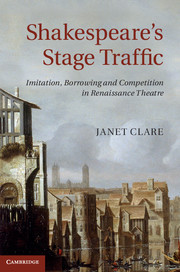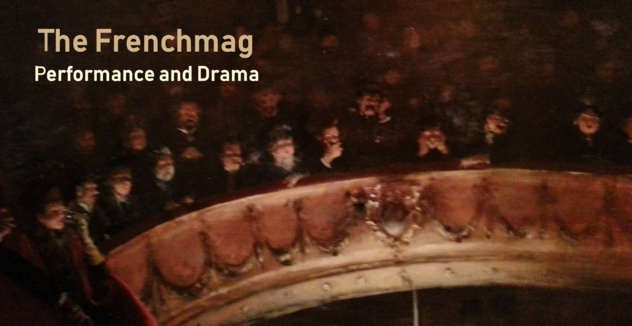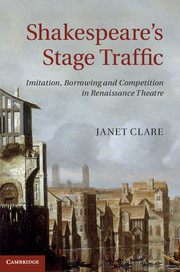
Shakespeare's unique status has made critics reluctant to acknowledge the extent to which some of his plays are the outcome of adaptation. In Shakespeare's Stage Traffic Janet Clare re-situates Shakespeare's dramaturgy within the flourishing and competitive theatrical trade of the late sixteenth and early seventeenth centuries. She demonstrates how Shakespeare worked with materials which had already entered the dramatic tradition, and how, in the spirit of Renaissance theory, he moulded and converted them to his own use. The book challenges the critical stance that views the Shakespeare canon as essentially self-contained, moves beyond the limitations of generic studies and argues for a more conjoined critical study of early modern plays. Each chapter focuses on specific plays and examines the networks of influence, exchange and competition which characterised stage traffic between playwrights, including Marlowe, Jonson and Fletcher. Overall, the book addresses multiple perspectives relating to authorship and text, performance and reception.
Introduction
1. Troublesome reigns
2. Deposing kings
3. Cross-cultural comedy
4. Competing dramaturgies: later comedy
5. Medley history
6. Hamlet and the 'humour of children'
7. Conversion: from Elizabethan to Jacobean theatre
8. Generic transformations
Afterword.
Janet Clare, University of Hull
Janet Clare is Professor of Renaissance Literature at the University of Hull and Director of the Andrew Marvell Centre for Medieval and Early Modern Studies. She is the author of Art Made Tongue-Tied By Authority: Elizabethan and Jacobean Dramatic Censorship, Drama of the English Republic, 1649–1660 and Revenge Tragedies of the Renaissance. She has published many articles on Renaissance and early modern literature and drama, co-edited the Journal of Early Modern Studies 2 on Shakespeare and Early Modern Popular Culture and reviewed Shakespeare productions in Ireland for Shakespeare Survey.
Introduction
1. Troublesome reigns
2. Deposing kings
3. Cross-cultural comedy
4. Competing dramaturgies: later comedy
5. Medley history
6. Hamlet and the 'humour of children'
7. Conversion: from Elizabethan to Jacobean theatre
8. Generic transformations
Afterword.
Janet Clare, University of Hull
Janet Clare is Professor of Renaissance Literature at the University of Hull and Director of the Andrew Marvell Centre for Medieval and Early Modern Studies. She is the author of Art Made Tongue-Tied By Authority: Elizabethan and Jacobean Dramatic Censorship, Drama of the English Republic, 1649–1660 and Revenge Tragedies of the Renaissance. She has published many articles on Renaissance and early modern literature and drama, co-edited the Journal of Early Modern Studies 2 on Shakespeare and Early Modern Popular Culture and reviewed Shakespeare productions in Ireland for Shakespeare Survey.





